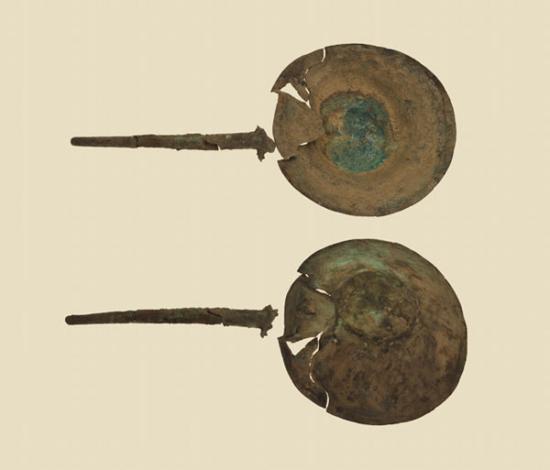Zominthos site at 1,200 meters atop Mt. Ida (Psiloritis), Crete’s highest peak
Greek Ministry of Antiquities
Source - http://www.yppo.gr/0/eindex.jsp
Impressive results have been reported in excavations at the Zominthos site on Mt. Ida (Psiloritis), the highest (1,200 meters) in altitude Minoan-era settlement on Crete — the cradle of the specific Bronze Era Aegean civilization.
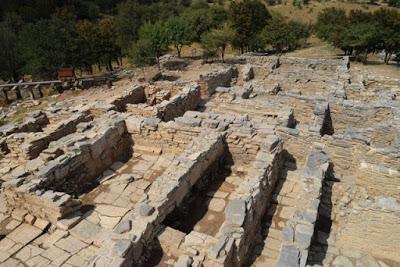 View of excavations at the Zominthos complex [Credit: Greek Ministry of Culture]
View of excavations at the Zominthos complex [Credit: Greek Ministry of Culture]
The site was originally discovered by Yannis Sakellarakis and excavations have been continuing under the guidance of Efi Sakellarakis Sapouna.
Archaeologists date the settlement to 1900 BC, with finds including a large palace complex, which features structures that are three meters in height, and constant habitation during the era.
Not only was Zominthos a residential centre, it also served as an extension of the Idaion Andron during the seasons when the sacred cave was not accessible. The 2015 excavations have provided new details that further illuminate the nature of the complex.
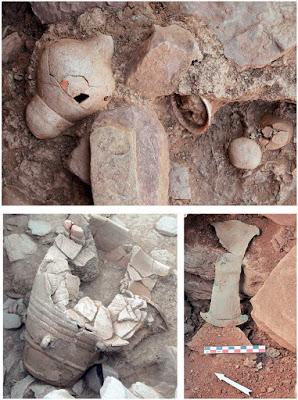 Pithoi and other finds at Zominthos [Credit: Greek Ministry of Culture]
Pithoi and other finds at Zominthos [Credit: Greek Ministry of Culture]
In architectural terms the complex, whose walls survive at almost 3 metres, is almost certainly the work of an ingenious architect who occasionally breaks the rules of Minoan palatial architecture to adapt to the needs of building high in the mountains of Crete. Luxurious spaces constructed from radiant white limestones, lustral basins, multiple entrance ways and skylights that let in plenty of light, public rooms fitted with benches and hearths, staircases that lead to the upper floors, along with numerous other objects, indicate the important nature of the complex and its highly political and economic role. The main structure was two and at some points, three storeys high.
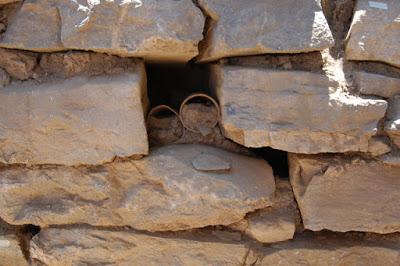 Rhyta found in wall niche [Credit: Greek Ministry of Culture]
Rhyta found in wall niche [Credit: Greek Ministry of Culture]
Fragments of frescoes that came to light this year portray plant, animal and architectural themes painted on thin plaster and reveal a particular sophistication. Artefacts discovered at the site include: inscribed altars, double-axes, bronze and clay incense burners, intricate lamps, rhyta (ceremonial vessels, some of which were found in niches such as the rhyton in the shape of a pig, others with with reed decoration), part of a clay goat figurine, all of which confirm the religious nature of the site. The bronze figurines, among the most important from Minoan Crete, the seals, beads from necklaces, rings, one of which bears a religious scene, all evidence the wealth accumulated at Zominthos.
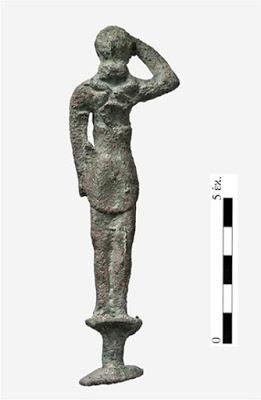 Bronze figurine from Zominthos [Credit: Greek Ministry of Culture]
Bronze figurine from Zominthos [Credit: Greek Ministry of Culture]
Some areas may be interpreted as women's apartments because of the textile weights used for upright looms found in these. Areas with benches and columns, of which not only the bases but also the lower part of wooden columns themselves have survived, are interpreted as public halls, while others, like the stepped altars, as separate places of worship. Yet other areas were reserved for private purposes.
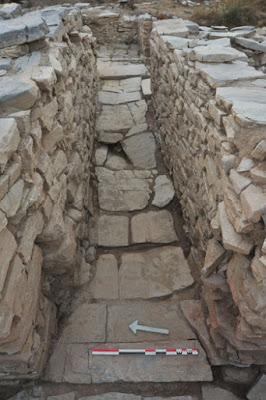 View of excavations at the Zominthos complex [Credit: Greek Ministry of Culture]
View of excavations at the Zominthos complex [Credit: Greek Ministry of Culture]
Apart from the areas of habitation and the public spaces, several workshops were also been identified, including a pottery workshop with a huge kiln and a rock crystal processing facility, indicating the self-sufficiency of the complex. Huge storage jars, either intact or in fragmentary condition, were found in large numbers, as were also numerous grindstones and millstones. With its typically religious character, the Zominthos complex is now interpreted as a residence of the descendants of the Knossian Dynasty, which enabled them not only to control the Idaion Andron, but to also mobilize the products of the mountain (wool and medicinal herbs) and export them to the markets of Egypt and the Near East.
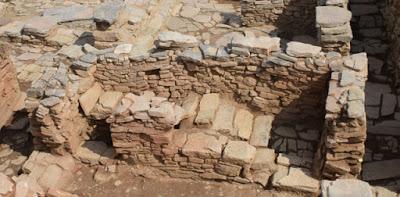 View of excavations at the Zominthos complex [Credit: Greek Ministry of Culture]
View of excavations at the Zominthos complex [Credit: Greek Ministry of Culture]
After the destruction of the Minoan complex, sometime after 1450 BC, the same place was settled by the Mycenaeans 100m. farther north. The Romans later built a military barracks on the site and plundered a large section of it.
Other architectural and spacial highlights include bright limestone walls, a reservoir, numerous entry ways, public halls with desks and even an ancient design for skylights!
The main structure features two and at some points three storeys.
Movable artifacts discovered at the site include inscribed altars, double-axes, bronze and clay censers and intricate lamps.
